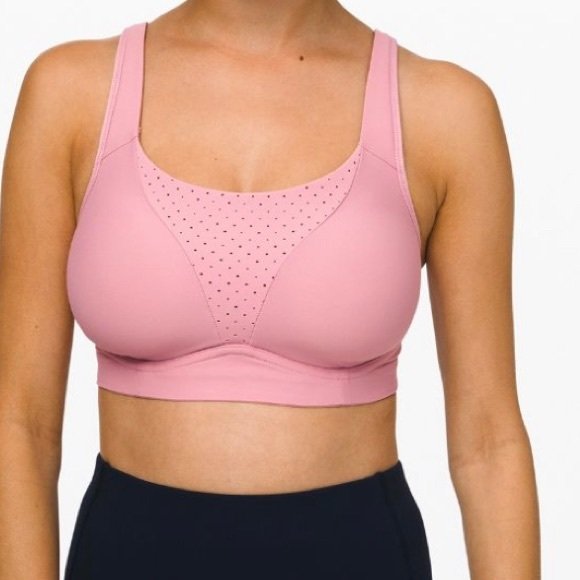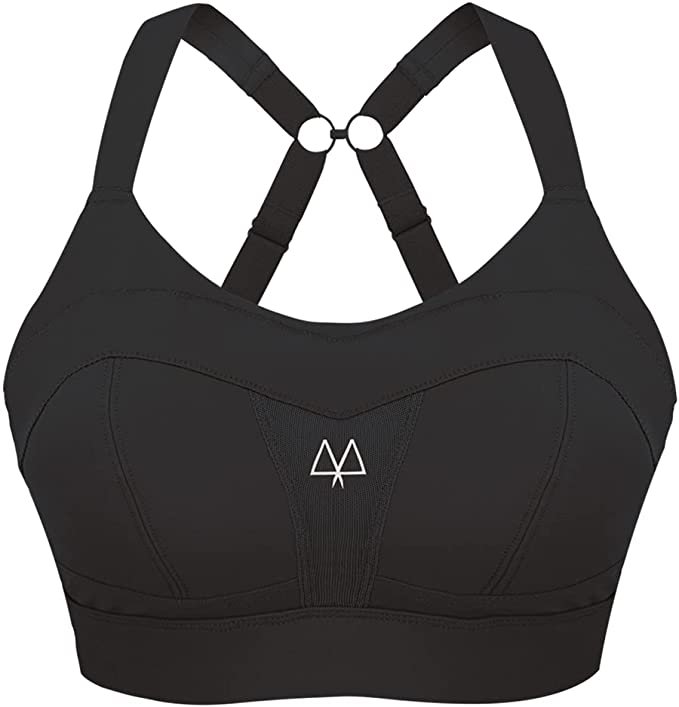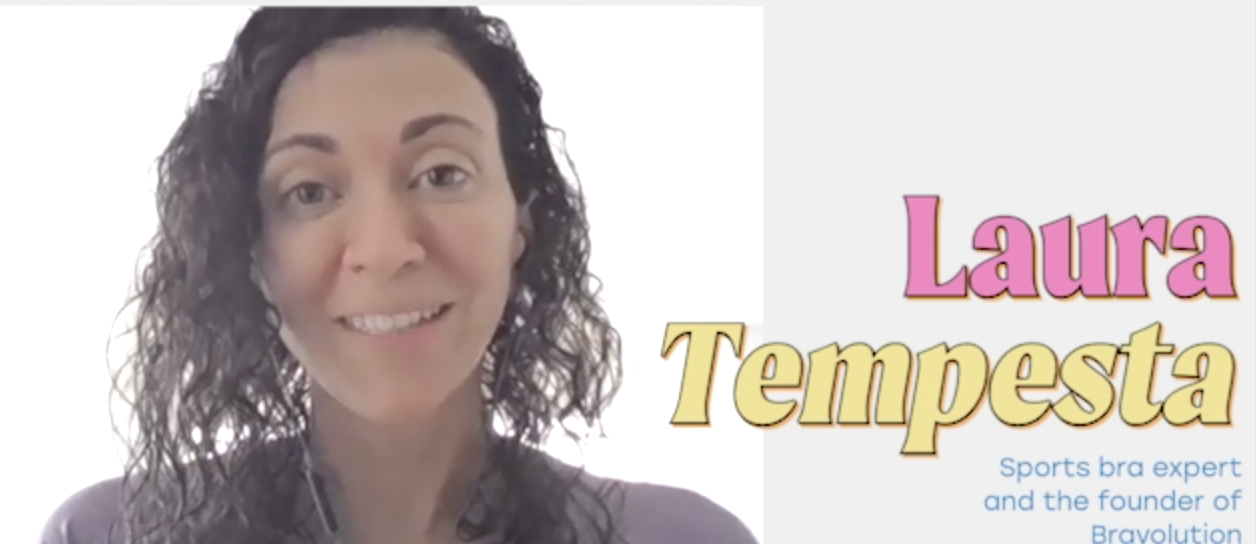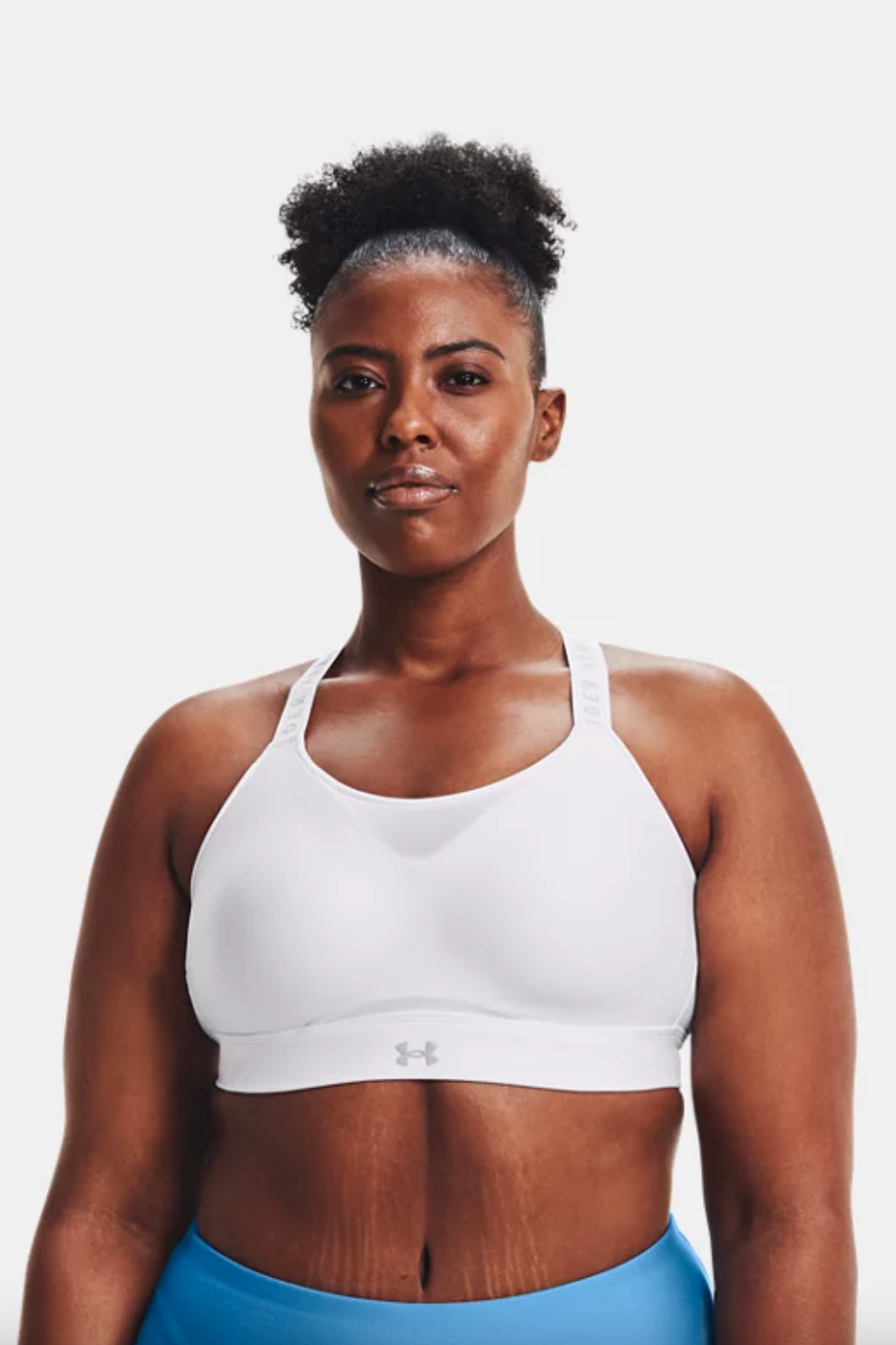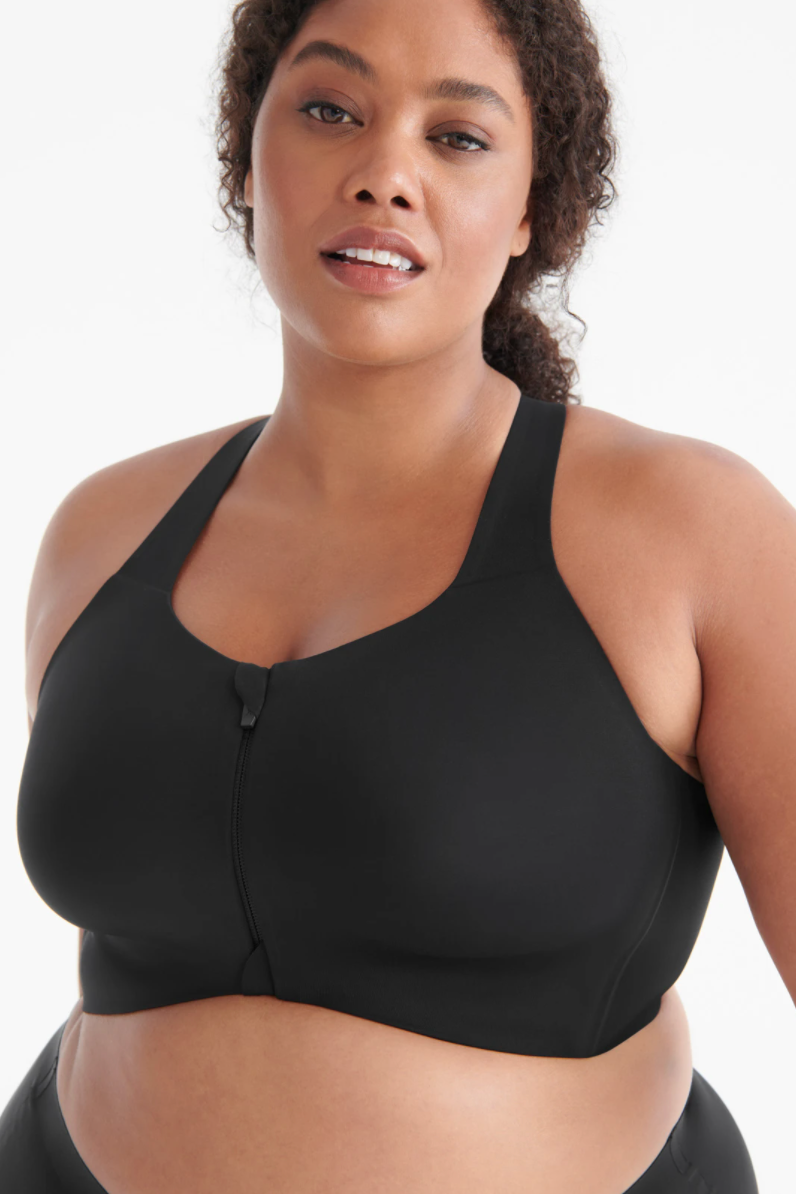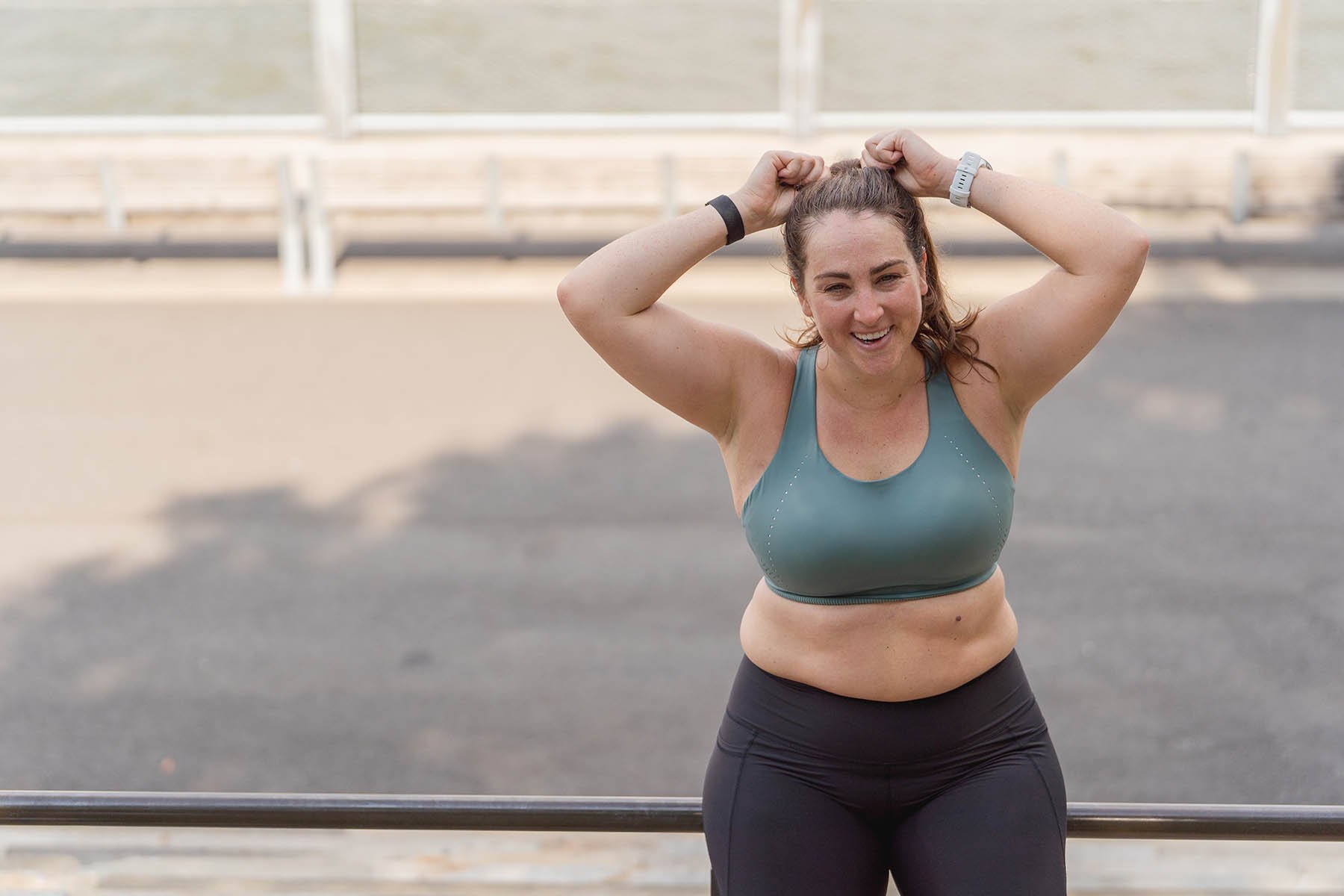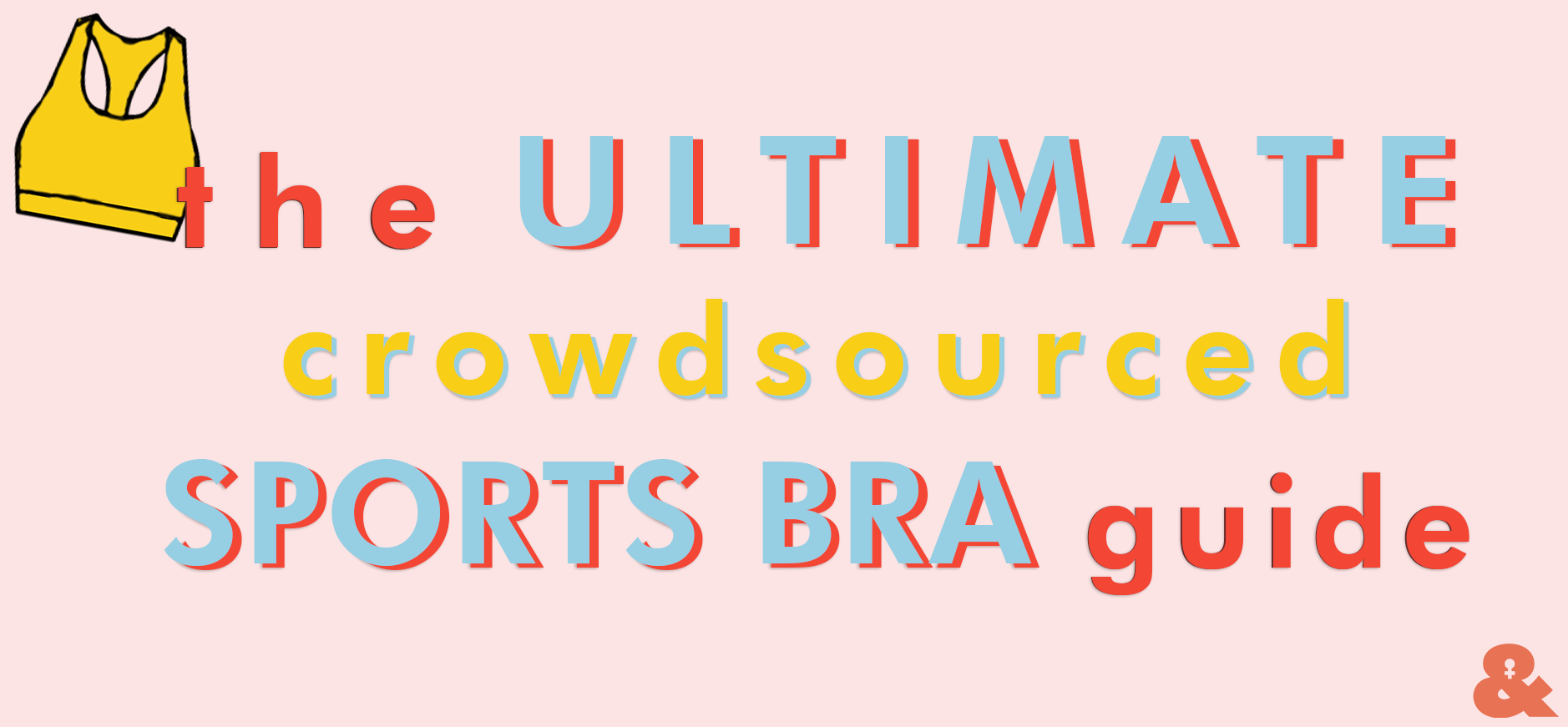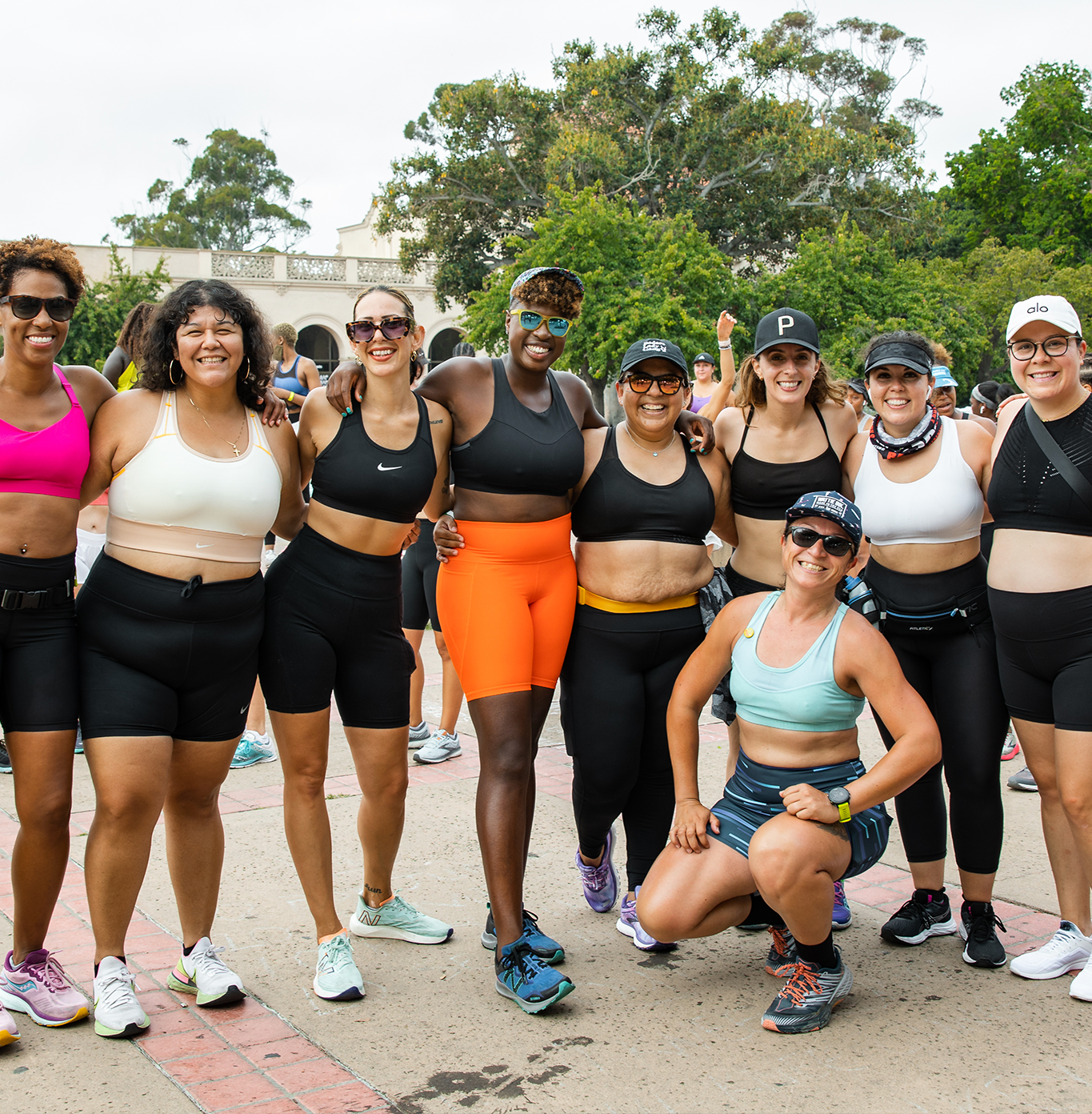
a guide to sports bras
How to Find Your Proper Sports Bra Size
Before we figure out how to find the perfect Sports Bra, there are a couple of things to keep in mind:
SIZE MATTERS. You need to measure your bra size before you buy a bra. Our sizes change. You change! Measuer and learn your sister sizes.
When you wear your sports bras, your boobs should point forward. We’re all girls here, we can talk boobs. Imagine your nipples are headlights. When your boobs are contained in your bra, your headlights should be pointing forward. Not side to side, down, or up.
We all need compression. If you have smaller boobs, you can reach for a compression bra. But if you have big boobs, you need a sports bra that is a combo of encapsulation and compression.
Clevage is the sign of a sports bra that isn’t going to support you. If you can see it, it’s not supported. We want to aim for as little clevage as possible when looking for a sports bra.
Your sports bra is supposed to be TIGHT. Both the straps and the underband should fit SNUG. If you can fit more than two fingers under it, it’s too loose.
Your sports bras will stretch out. So, find a tight underband that you can wear on the last setting. Then, as it stretches out, you can make it tighter.
ADJUSTABILITY IS YOUR FRIEND. You want to be able to adjust your straps. If the sports bra doesn’t offer adjustability, it’s not for you if you have larger boobs.
The perfect sports bra does not exist. EVERYTHING is average. That’s a given. But we all know how magical it is to find one that works for us. Just remember, what works for you won’t work for someone else. It’s all about understanding your shape and shoulder size.
*Chafing is inevitable. KT tape or sports tape on your bra line will save you many a painful post run shower.
So let’s get into it! Here’s how to find a supportive sports bra.
Step 1- Let’s find your band size.
The band of your sports bra provides the most support. So grab your tape measure (seriously, go grab your tape measure. Our sizes fluctuate so whenever you buy a new sports bra, measure first. Check-in. If measuring is triggering, reach out for support. A HAES (health at every size) therapist or social worker is an invaluable tool!
Start by getting your ribcage size: Grab your measuring tape and wrap it snug as a bug right below your boobs. Not sure where to measure? Look for scars from former sports bra chafing! Where the band of most sports bras hit is where you want to measure. Right below your underboob. Make sure your measuring tape is tight. Take that number and write it down. If you’re between sizes (38 1/2 inches), round down. Remember, this is just an estimate. We don’t live in a world where sizes are what they say they are. (Wouldn’t that be rad if we did? Seems like it would make sense!)
How to find your band size: Next, we find a jumping-off point for your band size. Take your ribcage size and 4 inches if it’s even (EX: Ribcage size: 34 1/2” + 4” = Bad Size 38”) and add 5 inches if it’s odd (EX: Ribcage size: 39 3/4” + 5” = Band Size 45”). Is this an exact science? I wish! Remember, there’s little consistency between brands. It’s all estimations. This is our jumping-off point.
Step 2- let’s find your cup size.
next, we find your cup size! Your cup size is the difference between your bust size and your band size.
REMEMBER, throughout our lives, we gain weight, and we lose weight. Even throughout our cycles our cup size changes. It’s important to measure before you buy new sports bras to make sure you’re wearing clothes that support you where you are TODAY. Your clothing needs to fit and support YOU. YOU do not need to change to fit into your clothing.
How to find your cup size: Put on a bra that isn’t a pushup bra. (I hope you’re laughing at the thought of a pushup bra like I am.) We want your bra to be light on padding. Then, grab your tape measure. We are going to tightly measure over the widest and fullest part of your boobs. Make sure the tape measure is straight in the back. Write that number down.
Now, it’s time to do some math. Subtract your cup size from your band size.
Example: If my band size is 38 and my bust size is 45, the difference is 7. I would be a G.
Remember, bra sizes are ratios and they’re kind of like jeans. Your size in one brand might be a size you can’t get over your knees in another brand. It’s infuriating. But you’re not the problem, the system in place is. We just need to discover how to work with the terrible system in place so that we can find bras that actually fit us.
Step 3- Find your sister sizes.
Ready to scream? Just because you’re one size on paper, the size you need to wear might be different. You may be a 38DD, 36G, and a 42C. That’s sister sizing! Think of it like this, measuring the fullness of your boobs is HARD. It’s why professional bakers weigh everything instead of measuring them. Weight is a more precise measurement than volume. But you can’t plop your boobs on a scale to get a precise measurement so one way to find a sports bra that actually fits and supports you is to learn your sister sizes.
Here’s the rule of thumb when trying on different sizes (or more realistically, buying a bunch of stuff online so you can try it on at home and return what doesn’t fit). After following steps 1 & 2, take that measurement and add 2” but go down a cup size by a letter OR, subtrack 2” and go up a cup size.
EX: Let’s say you’re a 40DD. If you want a tighter band, you’ll go down by 2” but up by a cup size. So you’ll try 38DDD/F or E. The opposite way, you want a looser band, you add 2” and go down a cup size. So 40DD becomes 42D.
REMEMBER, it’s all a bunch of hocus pocus between brands so try on your sister sizes.
Step 4- Define your shoulder shape.
DO NOT SKIP THIS STEP. Your shoulder shape plays a vitle role in discovering which sports bras work for you.
Strip down or get into your bra and go look in the mirror.
First, we want to figure out if you have wide, narrow, or average shoulders.
Wide shoulders
Narrow shoulders
Neither wide nor narrow
Next, we want to figure out if they slope or sit straight across. If they slope, you’ll see them rounding down slightly.
Once you figure out your shoulder shape, you can figure out which type of straps fit you best! Ever had sports bra straps you had to constantly adjust to keep them from slipping off? Or straps that dug into your trapezius muscle which led to tension headaches or jaw pain? (YAY SPORTS BRAS!) THIS IS WHY IT’S SO IMPORTANT TO FIGURE OUT YOUR SHOULDER SHAPE!
If you have wide shoulders, cross back sports bras are going to hurt you. You want an H back sports bra or a sports bra with straps that sit wider.
If you have narrow shoulders, you want a cross-back or racerback sports bra.
Step 5- Start asking around and trying things on!
The best way to discover new bras is to ask around. Ask women about their shoulder shape and preferences.
TLDR:
Finding a good sports bra for running is important because running without a supportive bra will lead to discomfort, pain, chafing, and potential damage to breast tissue. Our tips for finding the right sports bra for running:
Get the right size: You have to make sure your sports bra fits properly. See the above guide to check your bra size before buying.
Look for high-impact bras: Running is a high-impact activity that causes a lot of frustrating boob bouncing, so you need a bra that can handle that movement and won’t chafe or rub your raw. Look for bras labeled as high-impact, have loads of adjustability, and are made specifically for running.
Check the support: The bra should have good support for your breasts, so they don't move around too much while you run. Look for a bra with a wide band and straps that are adjustable, so you can get a customized fit. Adjustability is key!
Look for moisture-wicking fabric: COTTON IS THE ENEMY! The best sports bras feature moisture-wicking fabric to help keep you cool and dry during your runs by wicking sweat away from your skin.
Try before you buy: You have to try on sports bras before taking them on a run. Try jumping up and down or running around the store to see how the bra feels in motion.
Consider the style: Understanding the sports bra style and how it fits your body is important. Compression bras and encapsulation bras are two of the most common sports bras.
Compression bras are tight and compress the breasts against the chest.
Encapsulation bras have individual cups for each breast.
Choose a style that you find most comfortable.
Invest in quality: A good sports bra can be a bit more expensive than a regular bra, but it's worth the investment to protect your breasts and ensure your comfort during running.
NEVER put them in the dryer.
OUR FAVORITE SPORTS BRAS
Run Times Bra High Support, B-G Cups, $39-$68
GOOD FOR:
Big boobs
Wide shoulders
Women's UA Infinity High Sports Bra, $31-$60
GOOD FOR:
Big boobs
Standard & plus Sizes
Narrow and Average Shoulders
SOLIDARITY HIGH-IMPACT SPORTS BRA, $89.00 USD
GOOD FOR:
Big boobs
Narrow and Average Shoulders
LULULEMON AIRSUPPORT bra high support, $39-$89
GOOD FOR:
Big boobs
Narrow and average shoulders
Panache High Impact Underwire Racerback Sports Bra, $39-$70
GOOD FOR:
Bustier boobs
Narrow and average shoulders
Enell Sport High Impact Sports Bra, $49-$80
GOOD FOR:
Big boobs
Average and broad shoulders


